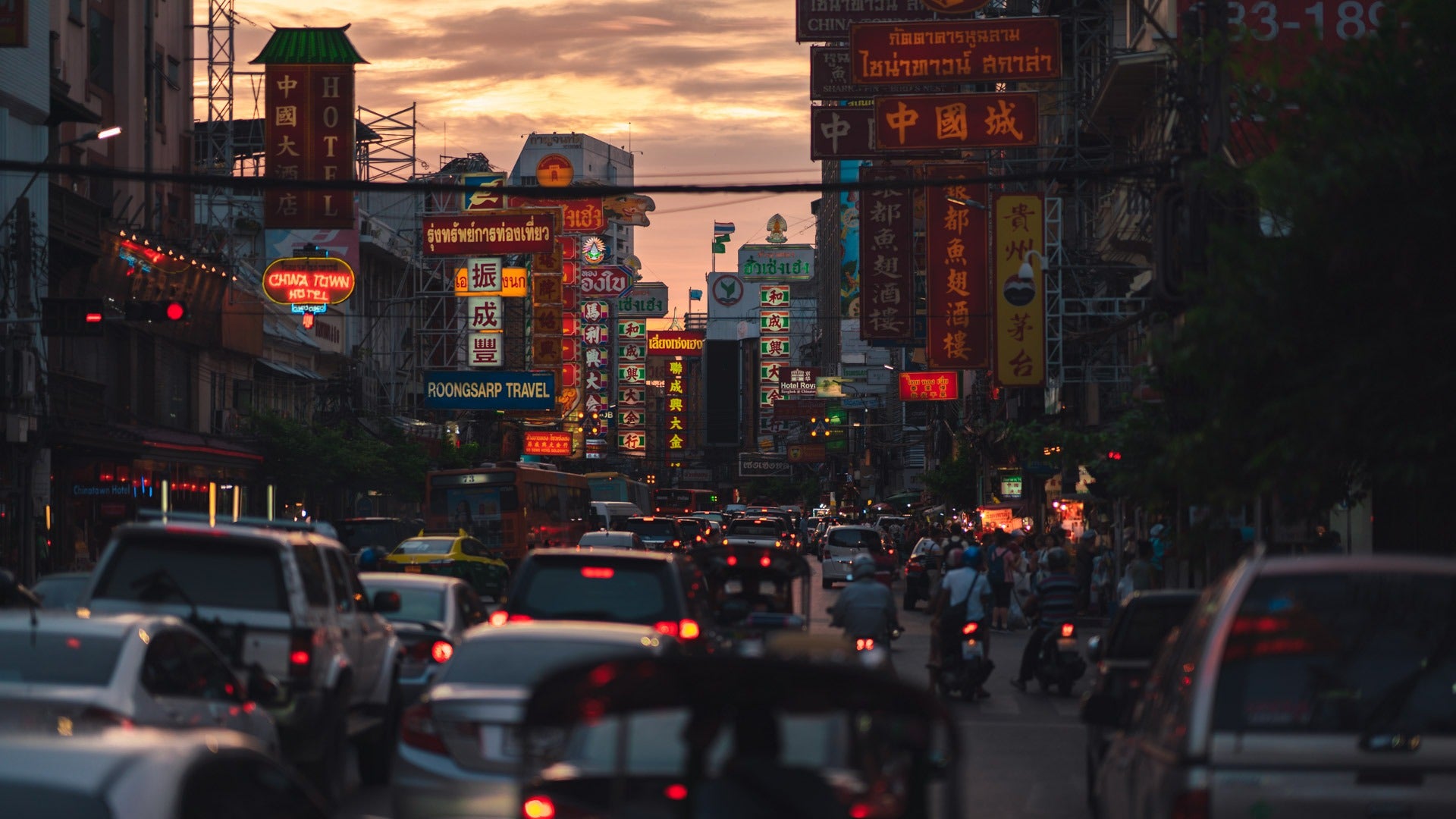Knowing the best ways to get from one part of town to another is a crucial part of any traveler’s experience in a city, and for better or for worse, Thailand’s cities have many many modes of transport.
They’re mostly cheap, with several options depending on the level of speed or comfort you’re looking for, some modes are more dangerous than others for traveler’s, and some modes of transport in Thailand have people who will just straight rip you off.
But that’s why you’re here. This is a no-fuss guide to the best ways of getting around town in Thailand.
If you’re in a city like Bangkok or Chang Mai, you’ve got a ton of options.
Trains
The train system in Bangkok is actually really decent and it’s my favourite method of travel because it’s somewhat reliable, it’s cheap, and you get to immerse yourself in the people.
There are two types of trains you can catch in Bangkok.
The MRT is the standard Metro train system, which runs throughout most of Bangkok. It’s generally on time, and stations are mostly clean and air-conditioned. It reminds me a lot of the MTR in Hong Kong.
The BTS Skytrain is run by a different company and is an elevated train system that runs on different tracks to the MRT. Both services have many stations that cross connect one another and it’s a really efficient way to get around town.
English signage is prevalent everywhere on both MRT and BTS stations, and all stations are labeled in English within carriages so you know where you’re going.
On both MRT and BTS stations, single fares are a little more expensive than taking a bus, but significantly cheaper than any form of private transport. Highly recommended if you don’t mind a little bit of walking.
Taxi’s
My second favourite method of travel in Thailand are taxi’s.
They’re everywhere in all cities, and drivers are easy enough to communicate with if you just show them a Google map of where you want to go.
As they’re tied to the company they serve, there’s less chance of bad actors or getting ripped off (by comparison to Tuk Tuks, see below). In Bangkok, fares start from 35 Baht and rise by 2 Baht per km after that. Always make sure the driver starts the meter when you get in, as they’re required by law to do so. There’s always a risk of them recognising you’re a tourist and taking advantage of you, charging you a silly, overinflated amount when you reach your destination - insist on them using the meter.
Still, it’s a good option if you have lots of gear to carry or any luggage. Also, it’s nice to get out of that Thailand heat and into an air-conditioned car.
Grab in Thailand
This is the mode of transport I can fall back to if I ever need to get myself out of a situation, or I need to go somewhere very specific and can’t explain it to a driver.
Think of Grab as the Uber of Thailand. It operates in other asian countries, and it’s pretty reliable in Thailand, too.
Regular people drive regular cars, pick you up and take you to your destination. You’re far more likely to get an English speaker on these journeys, but even if you don’t, having dialled in your exact destination ensures you’re definitely going to get there.
The nice thing about the app is that it shows your fare price beforehand, so you’ll never get ripped off. The bad part is that it’s generally 1/3rd more expensive than taking a taxi - the price you pay for connivence and safety - still, by western standards, it’s cheap as.
Also, unlike Uber back home, Grab also gives you the opportunity to pay in cash after your trip ends, rather than having to buy credit for the app. Although buying and using credit generally results in cheaper fares, it’s nice to have the option.
Motorsai
Motorcycle taxi’s are actually really good, and really fun.
They’re really efficient if you’re not carrying a heavy load. They zip through heavy traffic far easier than a car or a bus. They’re also really cheap - generally starting from 20 Baht and up from there depending on how far you go.
The only thing you have to let go of is the danger factor - but in my experience, most motorsai’s are fairly skilled and you can let them know if they’re going a bit too crazy.
Bus
Probably the cheapest form of transport, widely available in all shapes and sizes all throughout the country.
Fares can be as little as 3-10 Baht inner city, and Thailand has an extensive network of buses in all shapes and sizes in all directions.
With so many different busses and routes, it can be a bit daunting to find the right one, but check out Transit Bangkok or Google maps to plan your route.
Intercity, routes are everywhere along the main roads and the procedure is to first sit down, then someone will come along and ask you where you’re going and how much you have to pay.
Buses going from inner city out of city will be at the numerous bus terminals on the outskirts of the city - look out for the stalls with hand-made signs for the major tourist spots.
Songthaew’s
These are little pickup trucks that have been fashioned with two rows seats in the back. They serve as the local form of ‘bus’ transport in smaller towns. You wont find them anywhere in cities, but for less populated areas, they’re quite common.
They usually have their destinations on the outside, and there’s always ‘depots’ just outside the main area of most towns. Ask the driver where they’re going, jump on, smack a coin on a rail a few times to let the driver know where you want to get off at, and them pay him.
—
Of course, all these methods of transport differ slightly from city to city, but for the most part because I usually have a lot of gear with me, I love taking the train first, and then taxi or grab.



